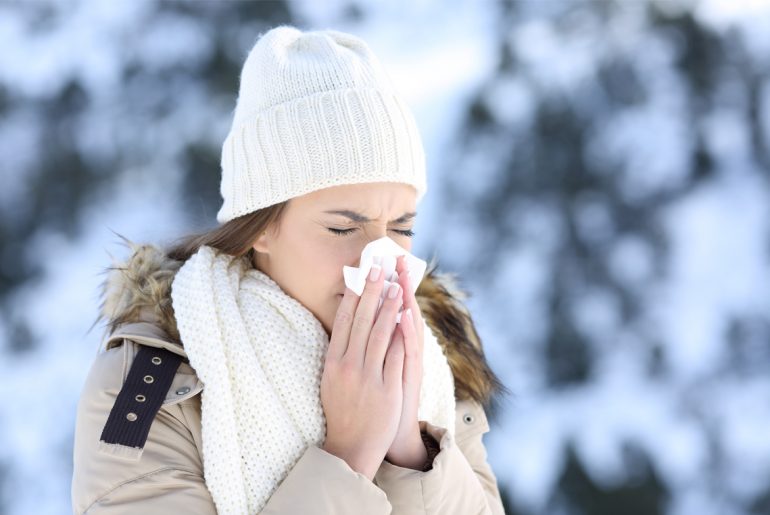Last flu season nearly 38 million people came down with the illness. Of those, 531,000 were hospitalized, and between 36,400 and 61,200 people died, according to the Centers for Disease Control and Prevention. Of course the usual advice is great: Get the vaccine, wash your hands often, and avoid contact with anyone who has been sick. But beyond that, is there anything else we can do? Most illness are spread by your hands, so using sanitizer and washing them regularly is extremely important, especially after coming home from a day in our germ-ridden world. So that really is the number one thing you can do. But what’s some other advice for avoiding the flu this season all together? Disinfect items you touch often. Your cell phone, tablet, and desk phone are all prime hiding spots for germs. You touch the outside world, then touch your cell, then put it to your…
The most likely places you’ll catch a cold this winter
The cold and flu are a harsh reality of winter for many. Between October and March, about 5 to 20 percent of the U.S. population comes down with the flu, according to the CDC. Adults average about 2-3 colds per year and children have even more. While we all know to wash our hands frequently and eat a healthy diet, to stay healthy it also helps to know the places where we’re most likely to pick up cold and flu causing bacteria and viruses in the first place. Both cold and flu are contagious infections of the respiratory tract. Coughs and headaches are common to both. Congestion, sore throat and sneezing are associated with colds, while the flu brings tiredness, a high fever and an overall feeling of weakness in the body. A cold is milder than the flu, and one can’t turn into the other because they are completely different virus. What they…
Here’s how long you’re contagious with the flu virus
If you’ve spent the last couple days cooped up inside your house fighting the flu and dozing off to Netflix, you may be wondering when you can return to civilization. You’re eager to do something constructive, yet you wouldn’t want to put your family or co-workers at risk for infection. So just how long are you contagious? Most people go back to work when their worst symptoms start to retreat, but that’s probably a little too early. The CDC says you can be contagious the day before you start feeling sick and up to seven days after. Children, elderly and those with weak immune systems can be contagious even longer. Those unpleasant symptoms are actually the result of your immune system fighting the flu virus. For starters, your body increasing in temperature, resulting in a fever because the flu virus doesn’t spread as well at higher temperatures. And that mucus has…
This is why your nose runs when it’s cold outside
Ever notice that your nose gets a bit runny when temperatures drop outside? There’s a reason for that. For many, a runny nose is an unfortunate part of winter. About 50 to 90 percent of people get a runny nose when it’s cold outside. But it’s not a sign that you’re getting sick, it’s just a side effect of your body warming up cold, outside air before passing it on into your lungs. It’s called “cold-induced rhinitis”, or “skier nose”, and it’s a completely healthy — albeit annoying — part of your body’s ability to regulate the humidity of the you breath. It’s the job of your nose to make sure that the air you breath is warm and humid so that it doesn’t irritate your lungs. When breathing in freezing temperatures, the air in the back of the nose always hovers around 79ºF (and as high as 86ºF), while the humidity is usually 100 percent,…




